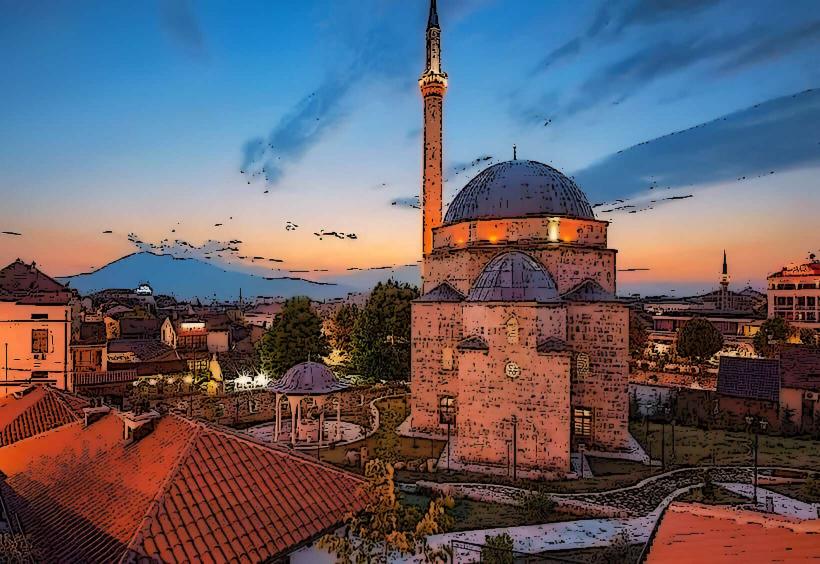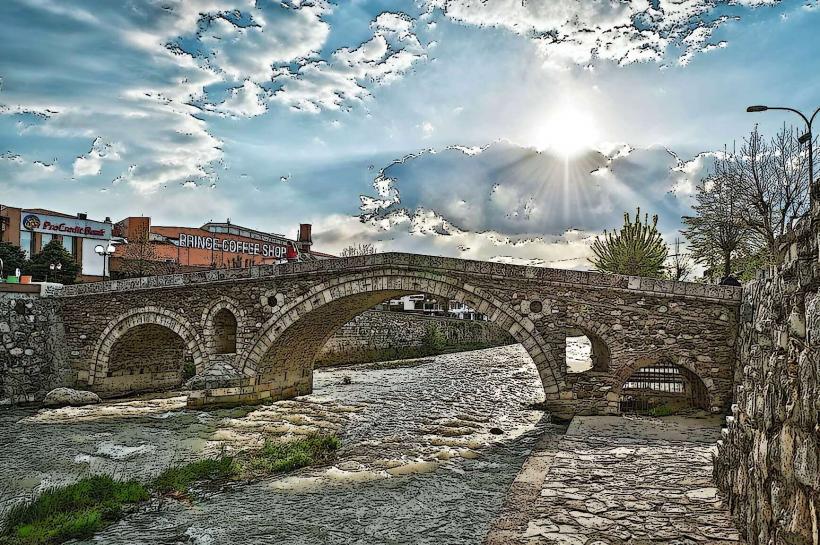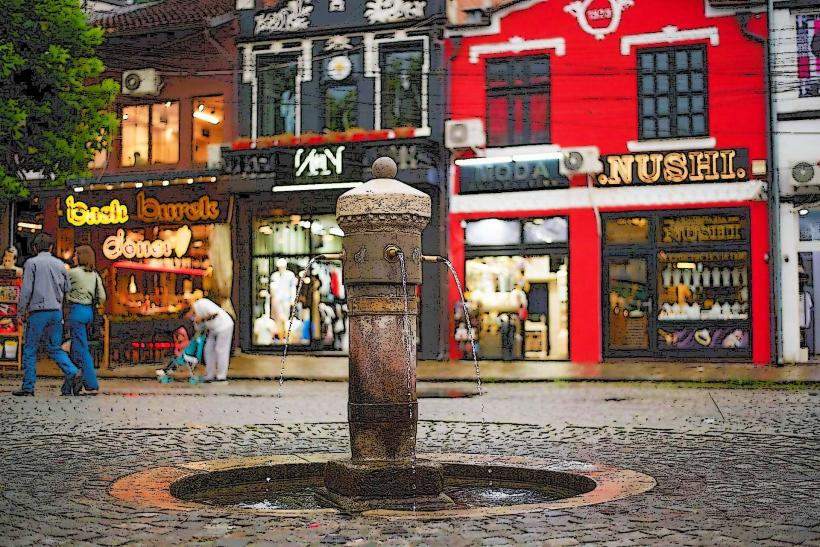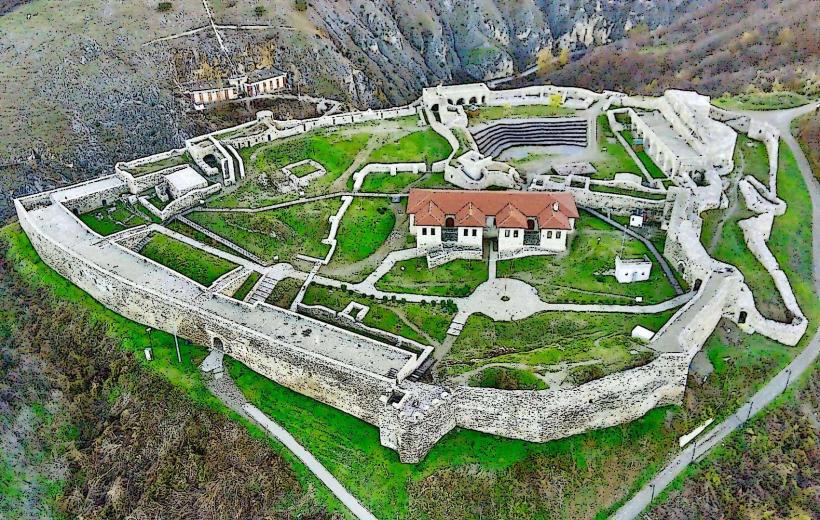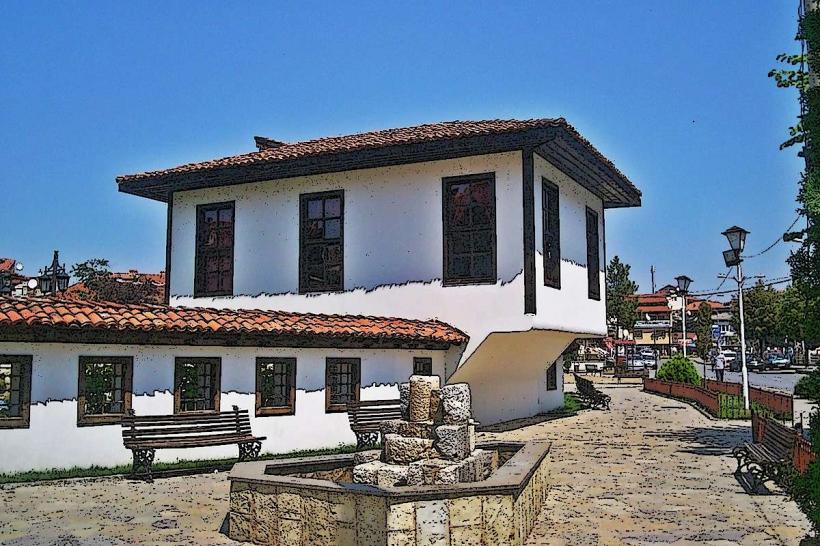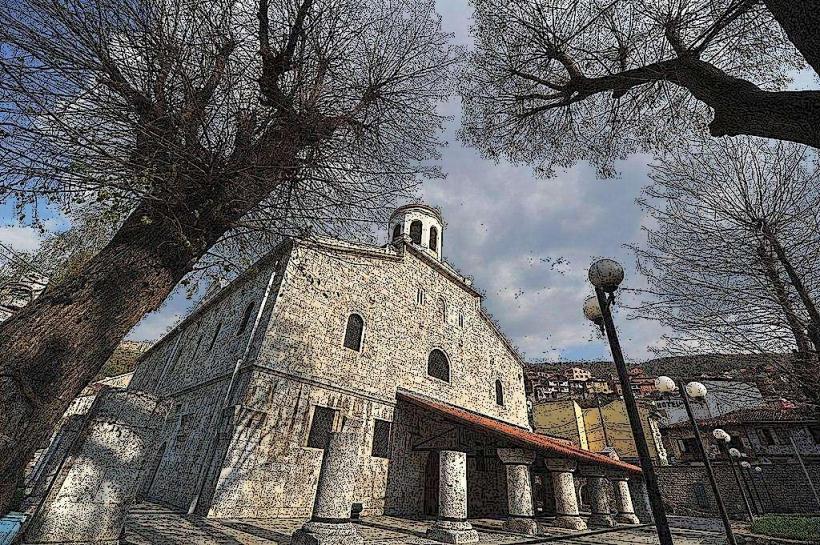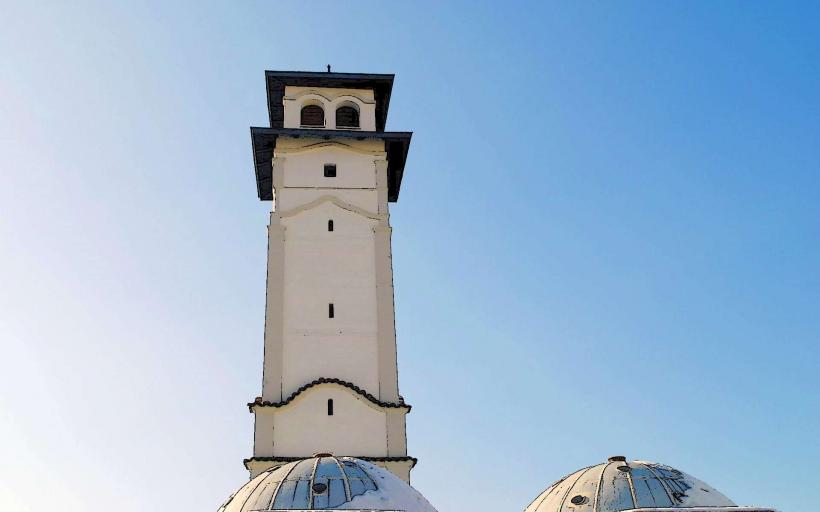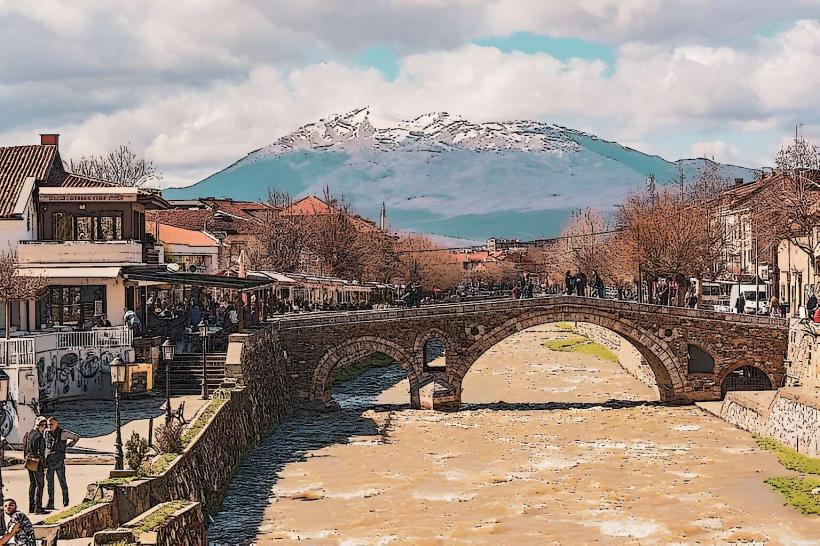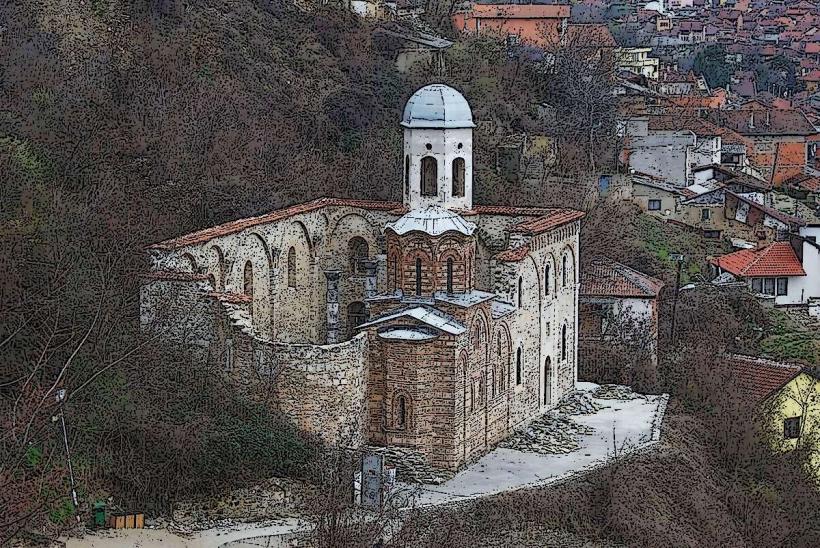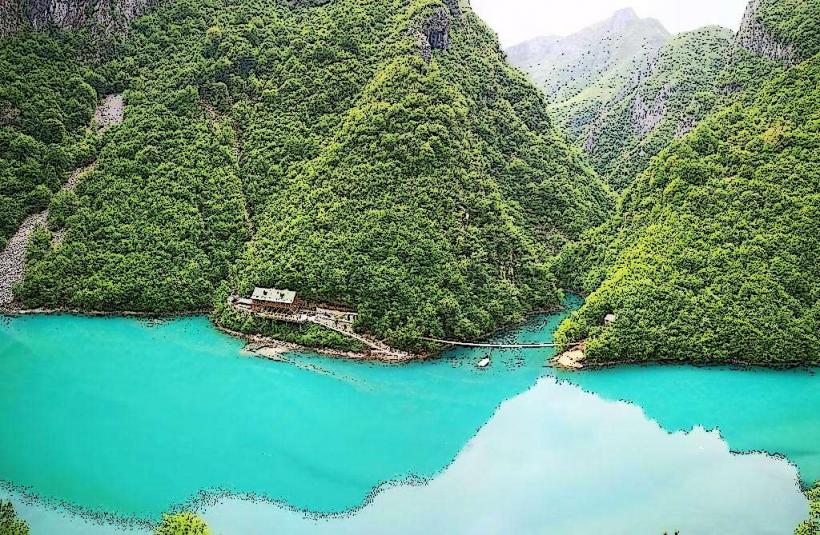Information
City: PrizrenCountry: Kosovo
Continent: Europe
Prizren is a historic city located in southern Kosovo, known for its rich cultural heritage, stunning architecture, and its role as an important regional center throughout history. The city sits on the banks of the Bistrica River, nestled at the foot of the Sharr Mountains. Prizren has long been a crossroads of different cultures, religions, and empires, and continues to reflect this diversity today.
Geography and Location
Prizren is situated in the southern part of Kosovo, near the borders with Albania and North Macedonia, which has historically made it an important trade and cultural hub. It is surrounded by the rugged terrain of the Sharr Mountains, offering scenic views and access to outdoor activities like hiking.
History
Prizren's history spans many centuries, from its time under the Roman Empire to its role as a key city under the Ottoman Empire and later in the modern history of Kosovo. Some of the key historical moments in Prizren's past include:
Roman and Byzantine Periods: Prizren, known in antiquity as Theranda, was part of the Roman Empire and later the Byzantine Empire. It was an important settlement in the region, contributing to the development of the surrounding area.
Ottoman Period (15th–19th centuries): Prizren flourished during the Ottoman era, becoming a key administrative and cultural center. The city's Ottoman architecture, including mosques, bridges, and public baths, still marks its landscape today. The Ottomans also established Prizren as a major center of trade and education, with its famous Prizren League formed in 1878, a significant political and nationalist movement that aimed at securing greater autonomy for Albanians within the Ottoman Empire.
Post-Ottoman and 20th Century: After the collapse of the Ottoman Empire, Prizren became part of Yugoslavia. It was significantly affected by the conflicts in the 1990s, including the Kosovo War (1998–1999), which left lasting scars on the city and its population. Despite this, the city has seen substantial recovery in recent years and is a symbol of Kosovo's cultural and historical resilience.
Culture and Heritage
Prizren is known for its rich cultural heritage and is often regarded as one of the most picturesque cities in Kosovo. The Old Town area is home to a blend of Ottoman, Byzantine, and Albanian cultural influences, offering a unique snapshot of the region's diverse history.
Religious Diversity: Prizren is home to a variety of religious communities, including Muslims, Christians (primarily Serbian Orthodox), and smaller communities of Catholics and Jews. This religious diversity is reflected in the many churches, mosques, and other religious sites throughout the city.
Architecture: The city boasts a variety of Ottoman-era buildings, such as the Sinan Pasha Mosque, the Prizren Fortress, and the Stone Bridge. Additionally, there are notable Byzantine churches, such as the Church of St. George and the Our Lady of Perpetual Help Church.
Cultural Festivals: Prizren is home to the DokuFest, one of the most famous film festivals in the Balkans, which celebrates documentary and short films. The festival is held annually and attracts international filmmakers, artists, and audiences, contributing to the city’s vibrant cultural scene.
Key Landmarks
Prizren Fortress: Overlooking the city, the Prizren Fortress offers panoramic views of the town and the surrounding mountains. The fortress has been in existence since Byzantine times and was later expanded under the Ottomans. It is a popular tourist destination, with remnants of walls, gates, and towers still standing today.
Sinan Pasha Mosque: A prominent Ottoman mosque built in the 16th century, the Sinan Pasha Mosque is one of the most important landmarks in the city. The mosque is known for its stunning architecture, including a large central dome and intricate frescoes. It remains an active place of worship today.
Stone Bridge (Ura e Gurit): Built during the Ottoman period, the Stone Bridge is an important architectural feature of Prizren. It spans the Bistrica River and connects the old town with the newer sections of the city.
The Church of Our Lady of Perpetual Help: A Roman Catholic church, it stands as a symbol of the religious diversity that defines Prizren. The church has a rich history and offers an insight into the Catholic presence in the city.
The League of Prizren Building: The League of Prizren was an important Albanian nationalist organization formed in 1878, and the building is now a museum that commemorates the historical significance of the League in the context of Albanian nationalism and independence.
The Museum of Prizren: This museum showcases the history of the city and region, with a focus on its Ottoman, Byzantine, and more recent history. It is an excellent place to learn about the cultural evolution of Prizren.
The Church of St. George: One of the many Serbian Orthodox churches in Prizren, the Church of St. George is famous for its frescoes and historical significance in the Christian Orthodox tradition.
Prizren's Old Bazaar: The Old Bazaar of Prizren is a lively area filled with traditional shops, cafes, and restaurants. It reflects the city's long history as a trade and cultural center. Visitors can find handcrafted goods, textiles, and local delicacies.
The Bistrica River: The river runs through the heart of Prizren and is central to the city's geography. The river has been a key feature of the city's development, with many landmarks, including the Stone Bridge, built around it.
Modern-Day Prizren
Today, Prizren is a vibrant city that balances its rich historical heritage with a growing modern identity. The city is a popular destination for tourists, particularly those interested in history, culture, and architecture. It also serves as a key cultural and economic center for southern Kosovo.
Prizren remains an important cultural hub for Kosovo, with ongoing efforts to preserve and promote its historical sites while embracing modern development. It is a city that symbolizes both the challenges and opportunities of Kosovo’s post-war era, standing as a testament to the resilience of its people and its ability to maintain its cultural diversity amid political tensions.
Conclusion
Prizren is one of the most historically and culturally significant cities in Kosovo. It stands as a testament to the region’s complex history and cultural diversity, with influences from Roman, Byzantine, Ottoman, and modern times. Despite the challenges Kosovo has faced, Prizren remains an enduring symbol of its cultural heritage and resilience. Whether exploring its religious sites, historic landmarks, or enjoying its cultural festivals, Prizren offers a unique and enriching experience for both locals and visitors.

